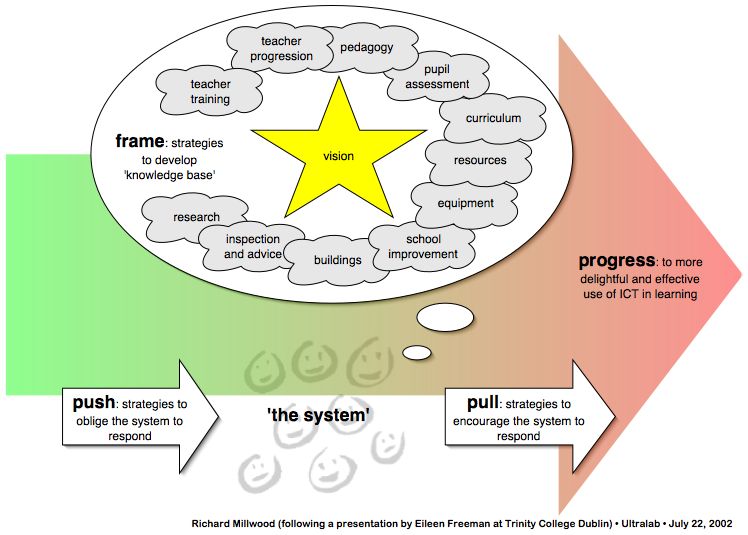SITE 2004
| When |
Mar 01, 2004
to
Mar 06, 2004 |
|---|---|
| Where | Atlanta |
This was my statement to introduce my ideas to the participants:
|
I am a Reader from Ultralab, a learning technology research centre of Anglia Polytechnic University in the UK. I have been developing action-research developmental research projects to support learning through technology since 1980. Over these years I have developed simulations, created multimedia resources and architected online community of enquiry for learning. This diagram addresses "(c) the inconsistency of current faculty professional development in the area of information technology;" by pointing out the lack of 'joined up thinking' about the system of education as a whole. Since 1980, the UK government education initiatives have invested in pupils first, teachers second and lecturers, inspectors, civil servants and others last. Teachers are not equipped as of right with laptop or other technologies unlike the humblest secretary in the private sector. Faculty staff are often even less well treated. Likewise, inspectors and civil servants have little in their past experience as a learner to clue them up for decisions affecting current learners and teachers.
|
|
|
|
An example from the early nineties relates to the introduction of CD-ROM technology - schools received free equipment and software, but teacher education institutions were an afterthought. A more recent example from the early 'noughties' is found in the new school building programmes, where local education authority 'model school buildings' do not keep up with new technology and neither does the understanding of the decision-makers involved.
|
This has created an imbalance where those at the base of the education 'food chain' i.e. pupils, are often most familiar and comfortable with technology but have no power, whilst those towards the top e.g. faculty staff, who wield significant power and influence over generations of new teachers, are struggling to find an adequate basis for decision-making due to lack of investment in their cognitive and affective relationship with new technologies. Is this analysis also true in other countries or is it a UK phenomenon? What can be done to overcome this enduring barrier? |
It is my view that significantly more investment in equipment and and continuing professional development for those higher in the education 'food chain' would be appropriate and that all of those areas in the diagram 'thought bubble' need such investment. |
(Words: 446 )



